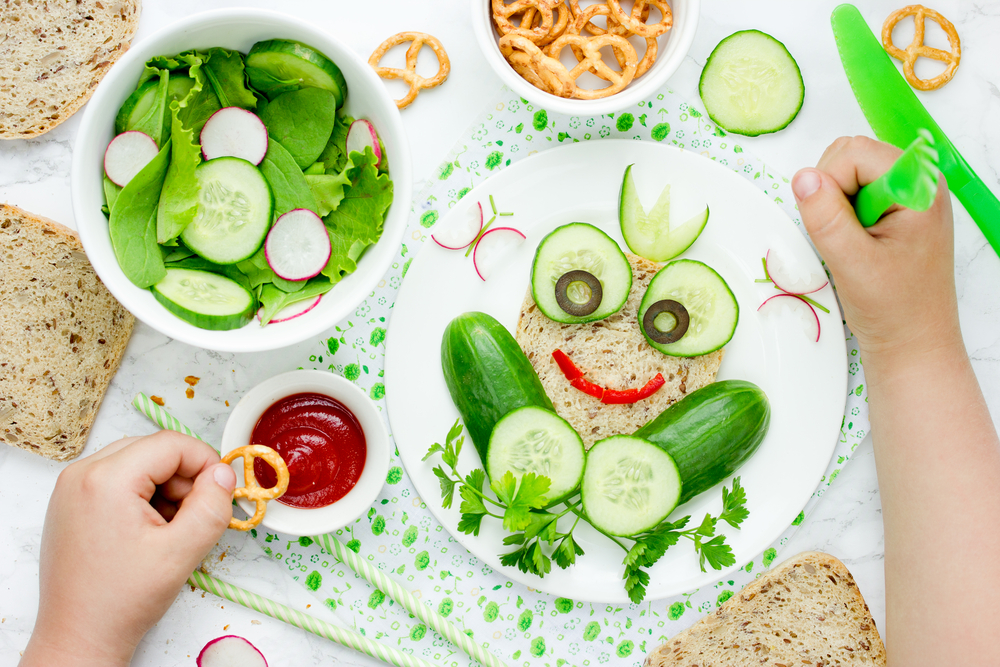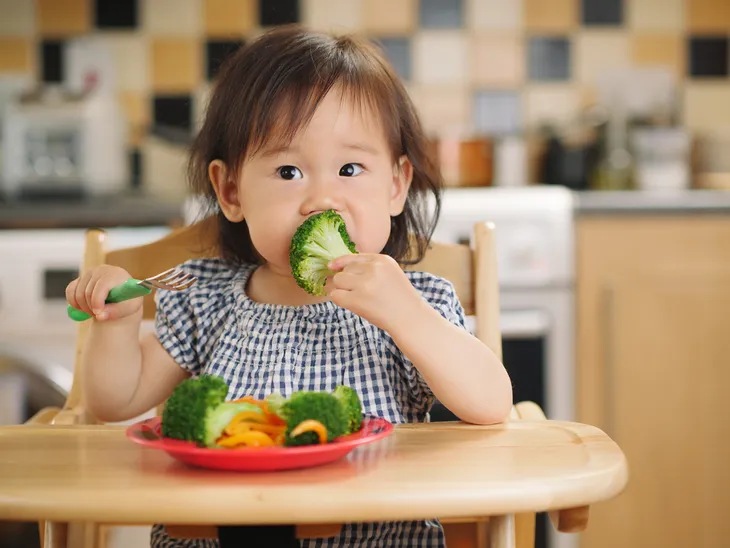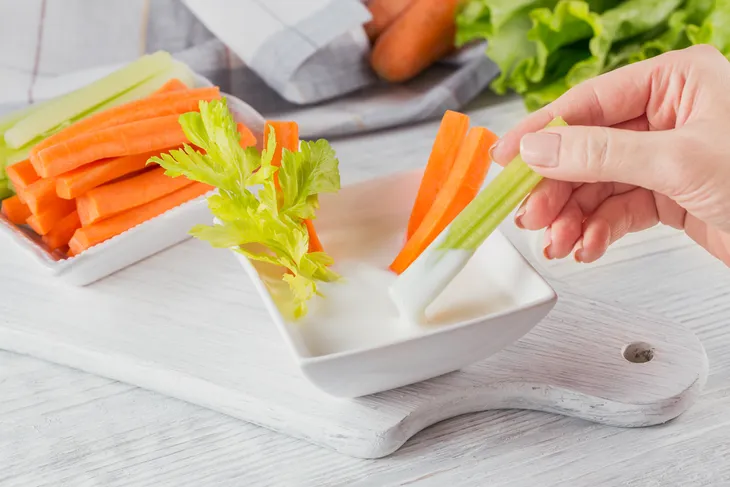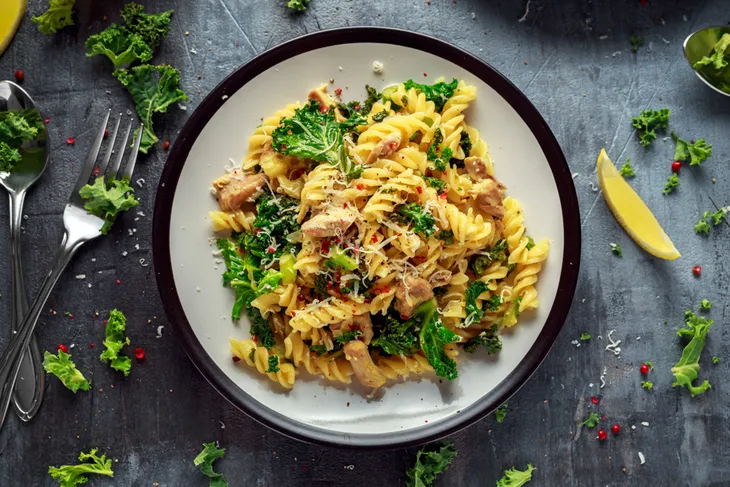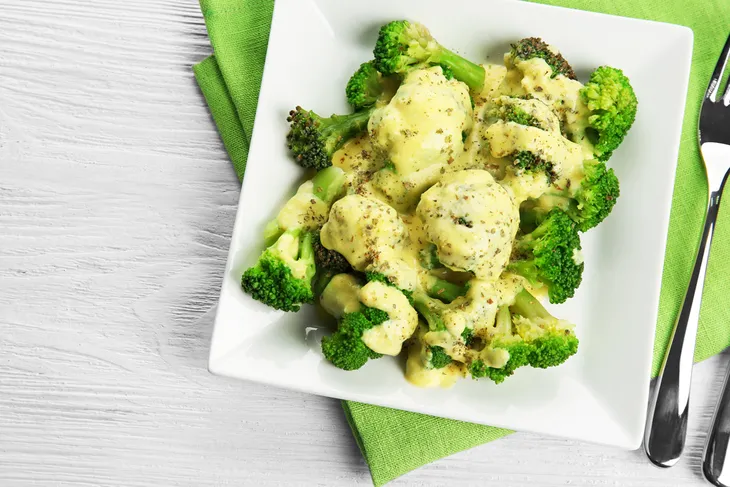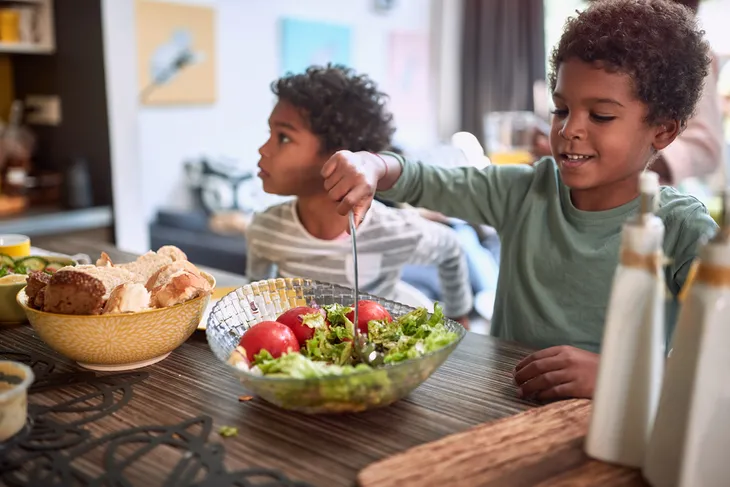Telling your kids to eat something “because it’s good for you” doesn’t always fly. In fact, as a parent, you know it can have the opposite effect in some cases. The federal government says kids aged 2 to 6 should have 3-servings of vegetables per day as part of a healthy diet, but how do you make that happen?
Well, barring them miraculously developing a love for broccoli overnight, it seems we parents may actually have to trick them into consuming more veggies. However, what they don’t know won’t hurt them—and in this case, what they don’t know will actually benefit them! Here are seven creative ways to get junior to eat more veggies…
Offer Them as a Snack
Usually when kids think of a snack, it’s often something that’s a “treat”—like a chocolate bar. The goal here is to make kids think about vegetables not as a boring side to dinner, but as the thing they reach for when they’re feeling peckish throughout the day.
You’re ultimately in charge of the food inventory in your fridge. “If you stock up on vegetables for snacks and limit unhealthy snacks in your home, your child will be more likely to choose vegetables when she’s hungry,” explains RaisingChildren.net.
Dip into Opportunities
As Reuters points out, perhaps raw carrots and celery on their own won’t have your kid’s mouth watering. However, “Offering a dip alongside vegetables encourages kids to eat veggies they might normally push aside,” explains the source, citing this 2013 study to back this up.
The study from the Center for Childhood Obesity Research at Pennsylvania State University found 64-percent of the 34-preschoolers involved said they liked veggies more with a low-fat dip. Only 6-percent of the kids refused to eat the vegetables without dip, while a full 18-percent refused with without dip, adds the source.
Sneak Veggies Into Pasta Dishes
Kids generally like pasta, as it tastes good and doesn’t have all the “healthy” stigma of a vegetable. While the noodles themselves may not offer huge nutritional value, the sauce can be a great way to deliver a dose of nutrition, explains FoodNetwork.ca.
“Pasta sauce is the ultimate vehicle for smuggling veggies into your kid’s plate,” notes the site, which links to this Foodnetwork.ca recipe to help you make your own veggie-rich version. The “hidden vegetable” tomato sauce includes onions, garlic, carrots, and even baby spinach.
Make Faces at Them
Well, use the vegetables to come up with creative designs that are fun for kids, suggests KidSpot.com. “Once you are serving food that looks like faces, cats, trucks, ladybirds or The Very Hungry Caterpillar you know you are deep in the morass we call motherhood,” quips the website.
This trick doesn’t “hide” the vegetables in other foods per se, but it’s a distraction tactic just the same. Instead of seeing vegetables, your kid may be seeing something they enjoy. You can play the “eat the bumper!” or “eat the ears!” game too with this technique. As the site says, “It’s worth a try.”
Disguise it With Cheese
A blanket of cheese over cauliflower or broccoli can go a long way—it can mask the earthy taste while disguising what your child is actually eating. However, if you’re going to resort to this tactic, make sure the cheese is also healthy (so it doesn’t defeat the purpose), points out EatingWell.com.
You can make your own cheese sauce, rather than using “traditional” sauces that are loaded with cream butter. The version offered by the source uses flour to thicken the low-fat milk, “and a small amount of full-flavored sharp Cheddar.”
Make the Process Smoother
Kids generally like milkshakes and smoothies, and you can load all kinds of healthy ingredients into these otherwise tasty treats. Greatist.com suggests putting spinach and kale into fruit smoothies, and offers up a variety of smoothie recipes to blend flavor and healthiness.
The same site also suggests making an avocado or carrot smoothie. These may not be as appealing to kids as the fruit-heavy version, but are super nutritious, notes the site. It also notes that grated carrots “are easy-peasy to fit into any fruit smoothie,” and deliver all of the fiber you may lose in carrot juice.
Show Them How Healthy They Are
The Huffington Post notes that kids’ aversion to veggies dates back to prehistoric times, with young ones being wary of what they’re eating. “If you saw something bright on a bush, you would be careful because once upon a time it might have killed us,” notes the article.
This instinct has carried over to today and may be why our kids turn their nose up at veggies, especially new ones. Try taking a mouthful of the vegetable you’re trying to get them to eat and showing them it’s okay. You don’t have to force-feed yourself vegetables you don’t actually like; there will be at least one option you can both enjoy together.
